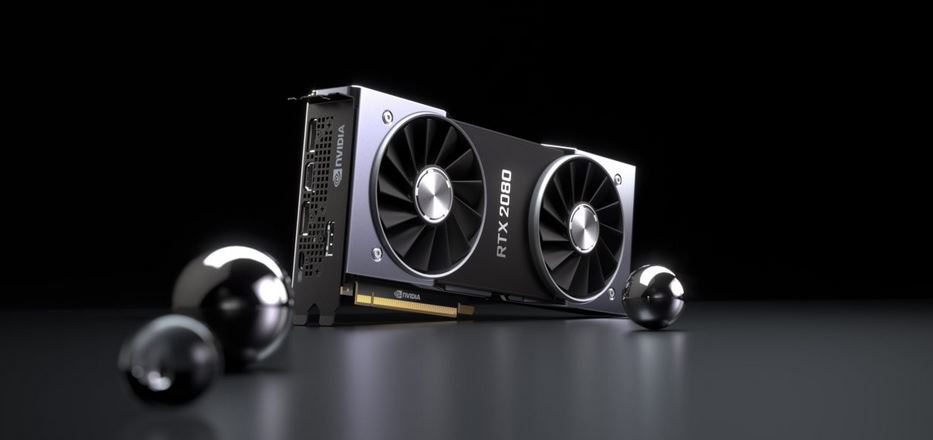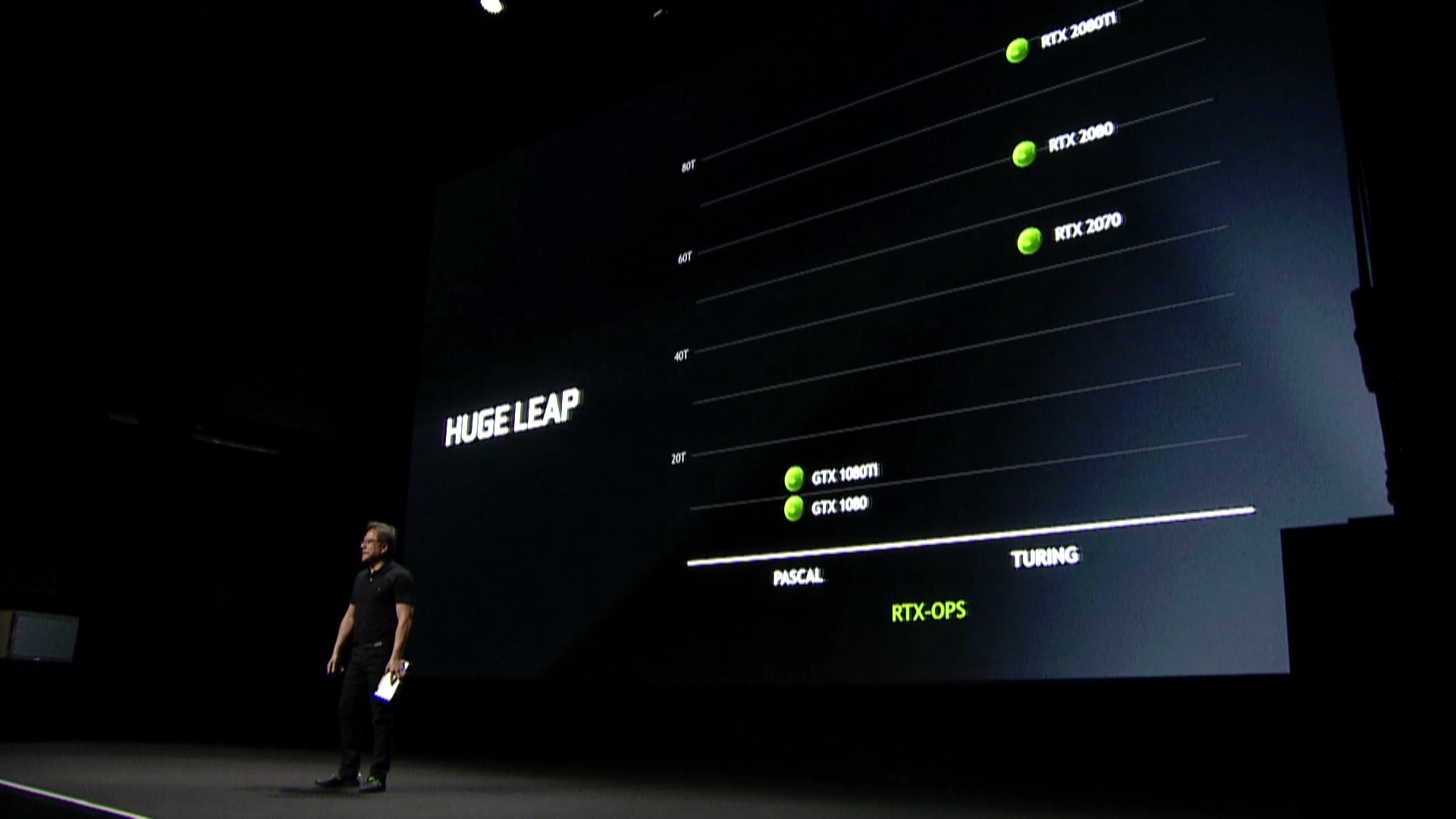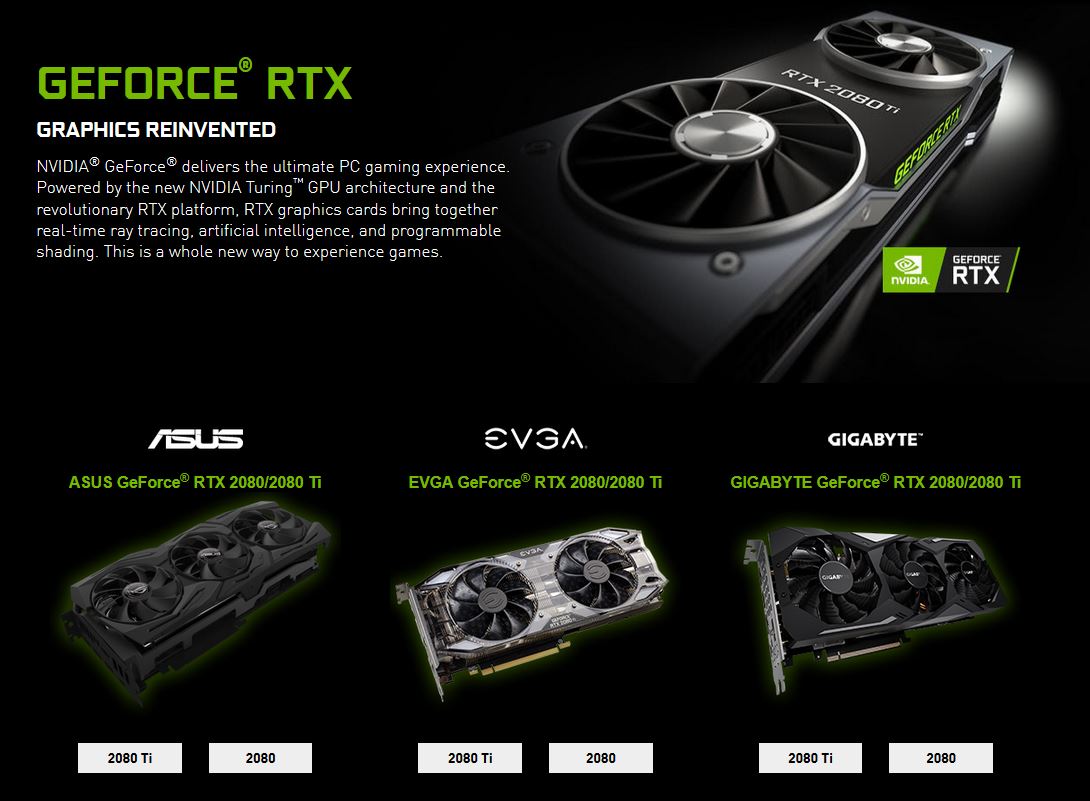

After months of speculation and rumors Nvidia finally revealed their newest 2000 series of graphics cards at gamescom, coming out swinging with the RTX 2080 and surprising the world with the RTX 2070 and 2080 Ti as well.
You can already pre-order your preferred brand of RTX GPU on Newegg, but there’s a lot to talk about with this new GPU, so let’s dive into the specs to find out why the RTX line is the new king of the jungle.
The RTX Family
Nvidia has been working on this tech for a long time, and they had a lot to say. You can watch the whole livestream presentation archived on Twitch, but what really need to know is that Nvidia has made a heck of a step forward in the way they render lighting and shadows, as well as the raw horsepower of their GPUs.
Essentially, every RTX GPU is a Turing architecture card, with the increased performance you would expect from a jump in architecture, plus a new processing unit that Nvidia calls an RT Core, which specializes in handling ray tracing and lighting. This RT Core allows the GPU to render lighting physically, in real time, on a level that we’ve never been able to do before.
The NVIDIA RTX 2070, 2080, and 2080Ti
Starting with the RTX 2070, we’re looking at Nvidia’s workhorse mid-level card, which will sport 8GB of GDDR6, six giga rays/s, and a rendering horsepower of what sounds like a staggering 45 “Tera RTX-Ops,” which seems to be a new metric that better measures the specific sort of power the RTX line brings to the table. The RTX 2070 will MSRP at $499, but you can expect the Founder’s Edition or any other card to slide in at somewhere around $599.
The RTX 2080 will keep the 8GB of GDDR6 but make the jump to 60 Tera RTX-Ops and 8 giga rays/s, which is a nice 25 percent jump from the RTX 2070 but that’ll feature a similar jump in price. You can expect the RTX 2080 to MSRP for $699, or you can snag the Founder’s Edition or an equivalent for around $799.
Finally, the RTX 2080 Ti takes things up to a whole other level by making the jump to 11GB of GDDR6, 78 Tera RTX-Ops, and 10 giga ray/s. It’s a nice jump in both memory and raw horsepower but it comes with a massive jump in price at the same time. You can expect to pay $999 MSRP for the RTX 2080 Ti or $1199 for the Founders or an equivalent overclocked card. This puts the RTX 2080Ti in the realm of previous Titan cards in terms of price, and could indicate a remodel of the way Nvidia structures their releases.
New performance metrics

We’re not sure exactly where a Tera RTX-OP stacks up against a standard TFLOP, but Nvidia is making it look like they’re comparable in scale. That said, it’s almost unbelievable that the RTX 2070, the lowest range option on the RTX market, will sport raw performance numbers over four times the speed of the Pascal GTX 1080, which clocks in at what now seems like a tiny 9 TFLOPS.
As a result, it’s possible that the RTX-Ops is a metric created by Nvidia to account for the increased ability of the RTX line to handle ray tracing technology, but that unfortunately makes it difficult to nail down exactly what kind of performance to expect out of the RTX 2000 series of cards.
That said, you can expect it to undeniably outpace more GTX cards when it comes to situations where ray tracing is an option. Otherwise we’ll have to wait for benchmarks to learn more. Of course, if RTX-Ops are in any way comparable, you can expect the RTX 2000 series cards to be an insane boost in performance for high end gaming.

